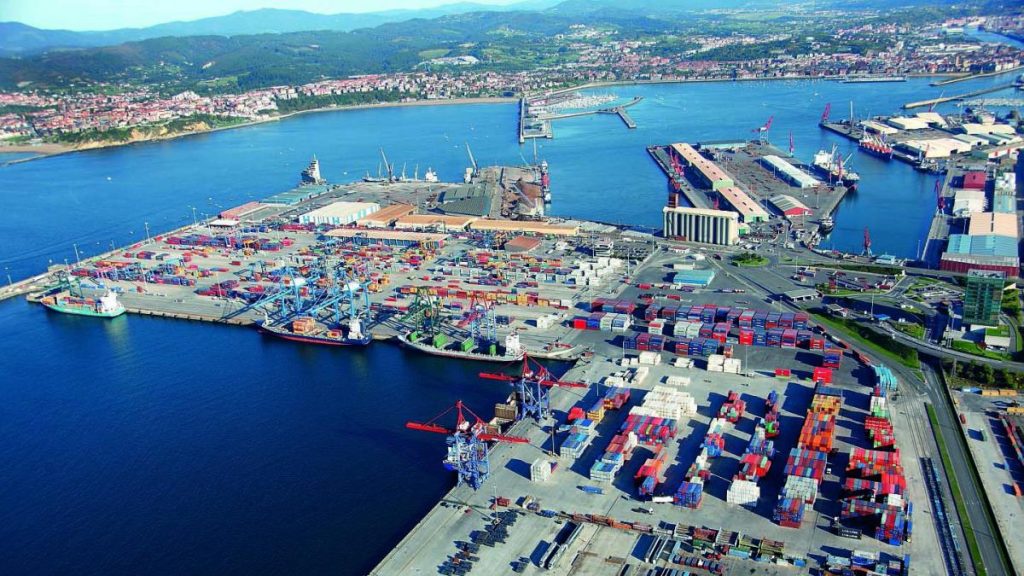SUCCESS CASE:
BILBAO PORT
ACCESS CONTROL AND DANGEROUS GOODS DETECTION

An important point for us was to automatically detect the hazardous goods plate (HGP), as this used to be a manual process: the port police officer at the entrance had to visually identify it. Now, we can also pass the collected information on to the container terminal, which can “expect” the incoming container. They gain efficiency as well.
Iñigo Imaz, Head of Telecommunications and Cybersecurity, Bilbao Port Authority.
About Bilbao Port
The Port of Bilbao is the main multimodal center in northern Spain and the fourth largest in the country, handling cargo traffic of around 16.6 million tons. Its capacity to adopt innovative technologies and continuously improve cargo management has positioned it as a leader in the port sector.

Challenge: Real-Time Automation and Traceability
With growing vehicle and container traffic, the Port of Bilbao needed to automate control and real-time traceability of goods entering and exiting by road and rail. Manual methods were no longer viable, creating delays and potential errors. It was necessary to capture information related to:
- BIC + ISO Container codes
- Vehicle license plates
- Detection and classification of hazardous goods (ADR/IMO)
- Vehicles classification
- UIC wagon codes
- Security seals detection

The Solution: Access Control with Minimal Infrastructure
The Port of Bilbao found an ideal technological partner in AllRead to address this challenge. AllRead's Agile Recognition Software (ARS) was initially implemented on two lanes from 2020, using one or two cameras per lane. Despite the complexity of the environment, the solution could capture alphanumeric codes, license plates, and hazardous goods in real-time, even in challenging conditions such as damaged or dirty codes, moving vehicles, or low visibility environments. This data is transmitted to the APB server for management and without being sent to its security system to enable the automatic opening of checkpoints on the roads, further streamlining traffic flow.

The impact was immediate: the port experienced a drastic reduction in waiting times, smoother access flows, and precise goods traceability. This initial success was so significant that the Port of Bilbao decided to expand AllRead’s solution to all its lanes.
Project Expansion
The next step was to expand the ARS solution to the rest of the lanes, totaling ten fully automated lanes. This allowed the port to manage both rail and road traffic more efficiently, increasing its operational capacity without additional infrastructure or compromising the accuracy of readings.
AllRead not only digitizes the captured data but transmits it in real-time to the port’s server, directly interacting with the Data Management System (Zutabeport) and the security system. This integration enables automatic barrier opening and streamlines traffic without human intervention, significantly enhancing operational efficiency.

The Result: Efficiency and Sustainability
The Head of Telecommunications and Cybersecurity at the port, Iñigo Imaz, highlighted the numerous improvements brought by the implementation of the new system. According to Imaz, “the reduction in queues at the port’s road accesses has led to shorter waiting times, reducing both costs and emissions.”
For Imaz, one of the most important advances has been the automatic detection of hazardous goods plates (HGP). “Before, this was a manual process where the port police officer had to visually verify the plate. Now, depending on the type of HGP, special protocols are deployed, such as escorting the container with a patrol,” he explained.

He also emphasized the improvement in operational efficiency by sharing access information with the container terminal: “The terminal can now ‘expect’ the incoming container, allowing them to improve efficiency.” Regarding rail, Imaz noted that before implementing the system, the “train map” was created visually, which led to errors, especially in adverse weather conditions. “Now, we cross-check the ‘train map’ with the data provided by the rail operator, and we also provide that information to the operator,” he added.
The collaboration between AllRead and the Port of Bilbao is a perfect example of how technology can revolutionize port logistics. Thanks to this solution, the port has optimized its operations and strengthened its leadership in the adoption of smart technologies, preparing for future challenges.
If you would like to know more about this success story, contact our team.